Have you ever wished you owned a pet that glows in the dark? That’s an odd sci-fi-level trait you probably thought no living household pet would exhibit naturally. Interestingly, scientists have been up to some weird stuff over the years, and thanks to them, people can now buy a glow-in-the-dark pet goldfish if they want. That’s just one of many examples of transgenic animals — genetically modified animals — out there. And it’s not just fish. There are transgenic mice, cows, rabbits, and even mosquitoes. This post explains what transgenic animals are, how they’re made, and some examples.
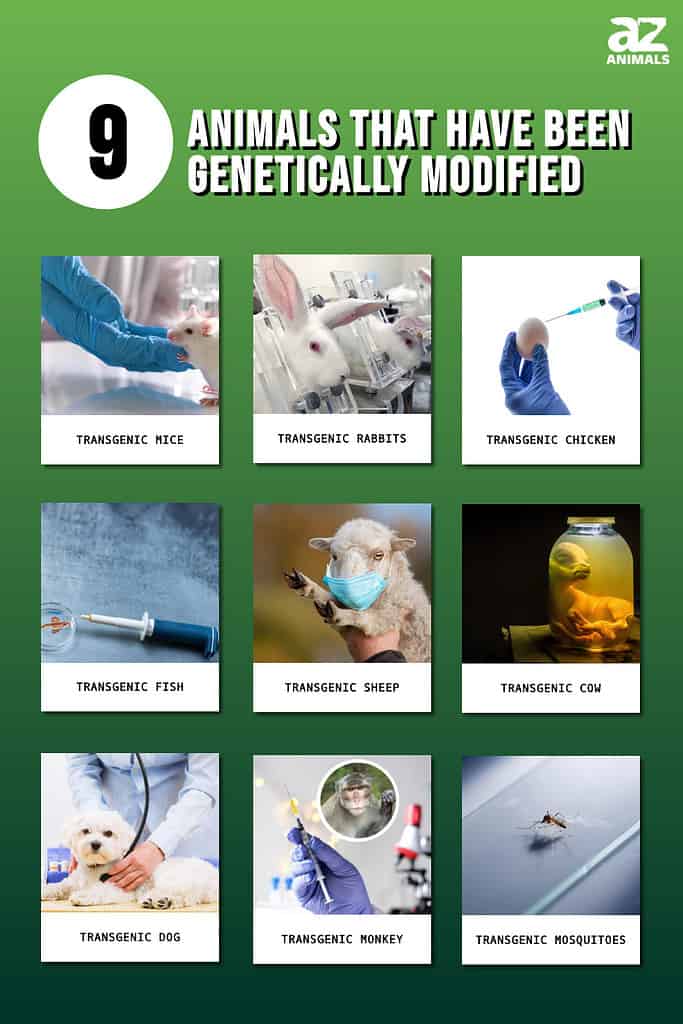
What Are Transgenic Animals?
Living cells contain molecules that determine the characteristics of the cell and the overall traits of an organism. Scientists call these molecules deoxyribonucleic acid (DNA), which is present in all organisms right from the embryonic stage. Snippets of this DNA make up genes. Although they occur naturally, it is possible to change the genetic information of an animal by introducing foreign genes. In the case of the glowing fish, all scientists had to do was introduce a glowing gene from another animal to modify its natural genetic composition. Doing this allows the animal to exhibit foreign traits it would not show naturally. Animals whose genes have been changed this way are called transgenic animals.
Apart from the possibility of adding new cool features by modifying an animal’s DNA, transgenic animals are beneficial to mankind too. We have used them to understand diseases better, test treatments, and produce biological products like vaccines. Transgenic farm animals have better resistance to diseases and produce better by-products, such as the production of high-quality milk. Some examples of animals transgenic animals include:
1. Transgenic Mice
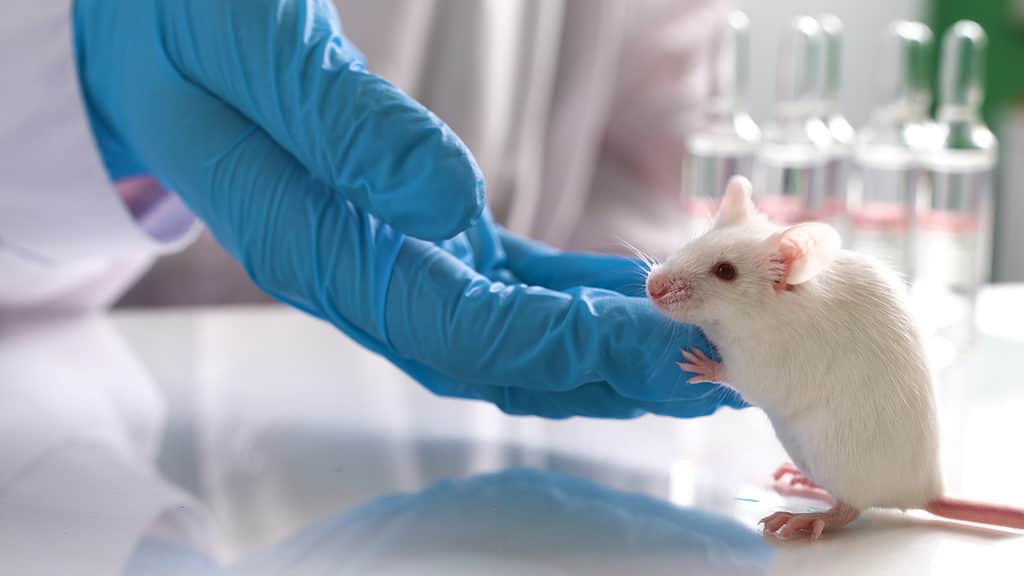
Transgenic mice are used in the study of diseases that could affect
humans
.
©Egoreichenkov Evgenii/Shutterstock.com
Mice are always the go-to for scientific experiments, and it isn’t surprising that the first transgenic animal was a mouse. Virologist Rudolph Jaenisch performed the first reported genetic modification at Salk Institute in 1974. Around that time, Beatrice Mintz, a mouse embryologist, was also doing some mouse genome alterations of her own at Fox Chase Cancer Center. They injected the DNA of early-stage embryos and reimplanted them into the female mouse. They were able to prove the feasibility of the process and thus laid the foundation for genetic modifications.
Years later, they created transgenic mice that had some strains of cancer. Since their body morphology is somewhat similar to that of humans, the idea was to use them to study the disease, see how it progressed, and test drugs.
2. Transgenic Rabbits
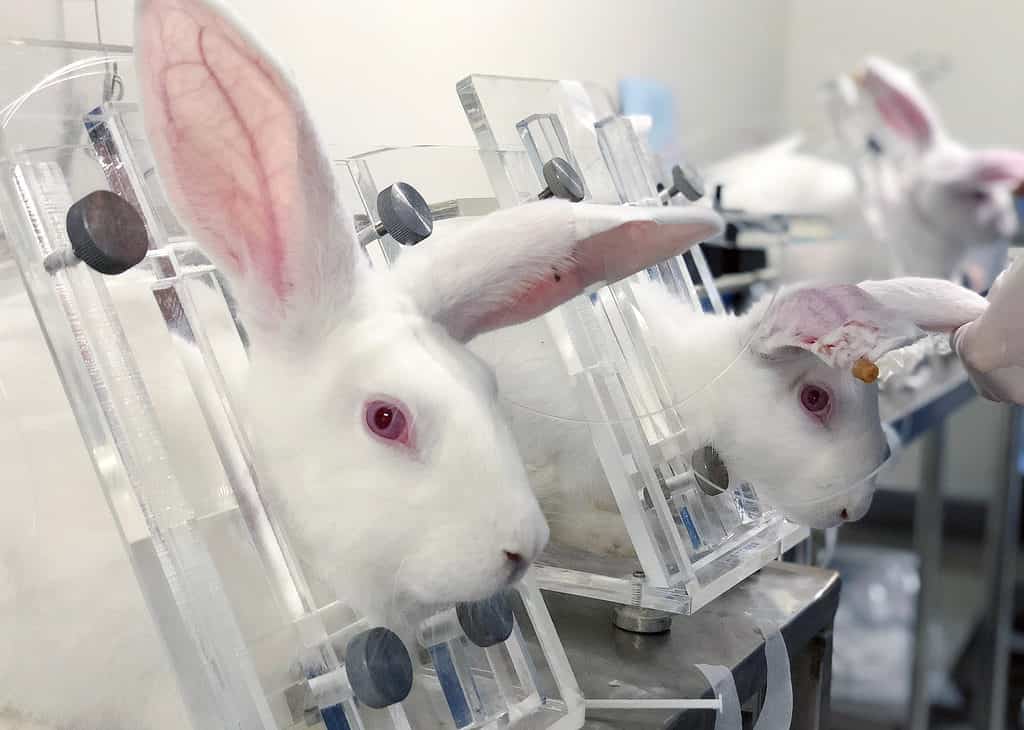
There are certain cases where mutations that result in some human diseases do not have the same effect in mice.
©unoL/Shutterstock.com
Despite their popularity in the field, there is a weakness in the use of transgenic mice for biomedical research. There are certain cases where mutations that result in some human diseases do not have the same effect in mice. The relatively small size and some phylogenetic traits of mice make them unsuitable for some biological techniques as well. With features closer to that of primates, rabbits became a better alternative.
Researchers created the first rabbit to have its DNA altered in 1985. Subsequently, we have used transgenic rabbits to study several diseases, including AIDS and many cardiovascular conditions. Additionally, they have been useful in the synthesis of pharmaceutical proteins.
3. Transgenic Chicken
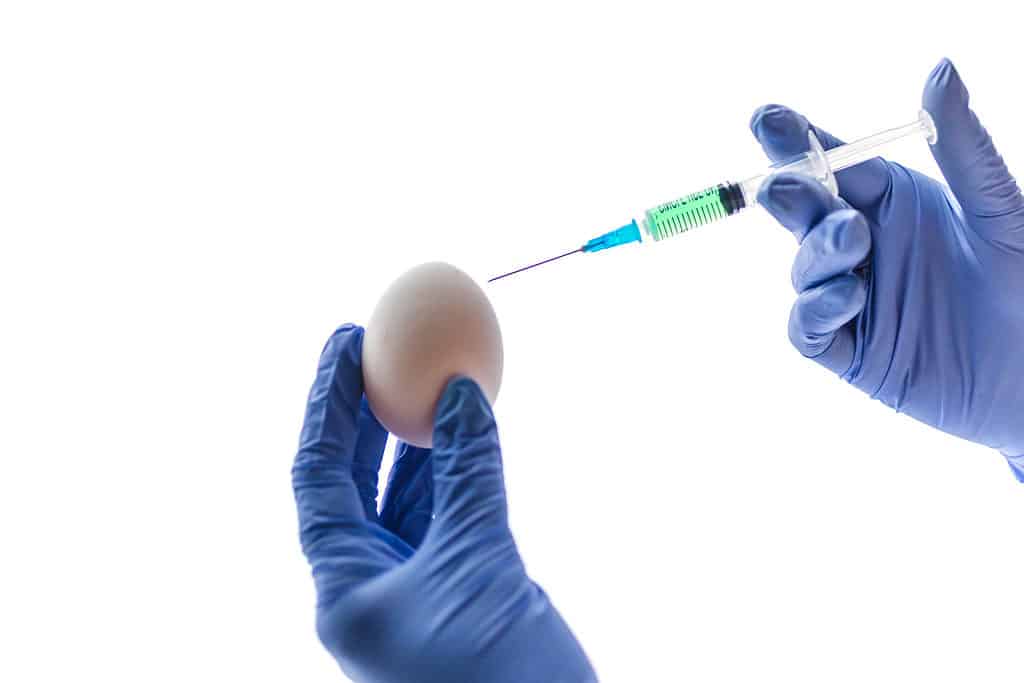
The eggs laid by
chickens
with modified DNA have been considered to cure some rare illnesses in poultry birds.
©Travis182/Shutterstock.com
Scientists have been able to make transgenic chickens by introducing foreign-modified cells into a chicken embryo. In 1987, D.W. Salter and L.B. Crittenden were able to create a particular viral strain of chicken. The strain was resistant to avian leukosis.
The eggs laid by chickens with modified DNA have been considered to cure some rare illnesses in poultry birds. The Food and Drug Administration (FDA) in the US authorized the use of transgenic chicken eggs to produce a certain drug in 2015. The drug, which they called Kanuma®, is for the treatment of a rare condition that prevents the breakdown of fatty acids in body cells.
4. Transgenic Fish

Scientists started producing transgenic fish to produce useful proteins for medical research.
©JPC-PROD/Shutterstock.com
In 1985, China made the first transgenic fish. A lot of transgenic fish species have been created after this. One of the reasons for the genetic transfer in fish is food production. The modification process increased the growth rate of fish. Transgenic salmon was the first animal species produced for this purpose. However, authorities are yet to approve genetically modified fish for commercial use.
Over the years, the reasons for the modification of fish genes have changed. Scientists started producing transgenic fish to produce useful proteins for medical research. They have also made transgenic fish as non-mammal subjects for comparative research. The modified fish have also been used to demonstrate the negative effects toxic substances have in freshwater and saltwater environments. among other purposes.
5. Transgenic Sheep
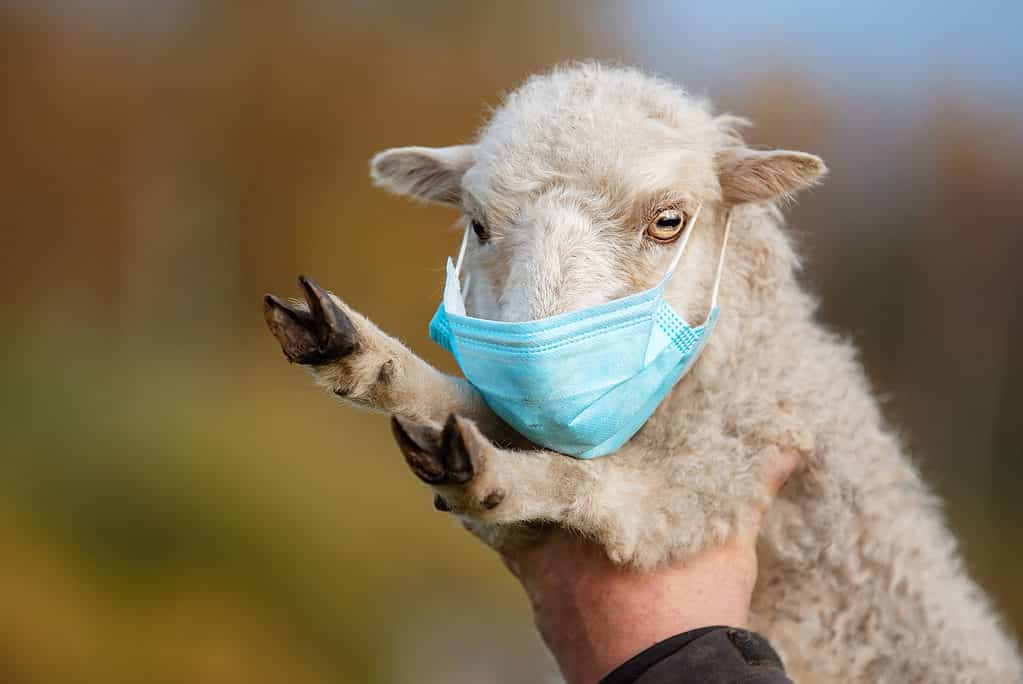
Embryonic cells from mice have been used to mend damaged hearts in
sheep
.
©Rita_Kochmarjova/Shutterstock.com
British scientists successfully produced Dolly — a sheep — in 1996. The animal was the first mammal produced from an adult cell. Before then, emphasis has been on only embryonic cells. In the case of Dolly, they extracted udder cells from a Finn Dorset white sheep. The udder cells from the six-year-old animal were placed inside an egg that belonged to a Scottish blackface ewe. This gave rise to an embryo that was cultured for seven days before being implanted in another Scottish blackface ewe.
Whether Dolly is a clone or a transgenic animal has sparked many arguments in the scientific world. People that go with the clone theory insist that the genes used in the case of the sheep were unmodified.
Regardless, there have been several transgenic sheep since then. Surprisingly, embryonic cells from mice have been used to mend damaged hearts in sheep. The goal of the experiments was to verify if human stem cells in their embryonic form can probably repair heart damage.
Apart from research, experts have also used transgenic sheep for pharmaceutical purposes. Some scientists even have the futuristic hope that transgenic sheep may become useful in human organ and cell transplantation for the treatment of genetic conditions.
6. Transgenic Cow

As research is still ongoing, there have been assumptions that the transgenic species will be potentially useful in many other ways.
©saoirse2013/Shutterstock.com
Rosie, a transgenic cow, was produced in 1997 for enhanced production of milk and molecular farming. The extra genes in this transgenic cow were introduced into the cells of the mammary gland. The genes may come from the same species or other cow species. They also altered milk from these cows to contain substances (such as some therapeutic proteins) to treat certain human illnesses.
As research is still ongoing, there have been assumptions that the transgenic species will be potentially useful in many other ways. The belief is that they will find applications in other fields, such as animal health, agriculture, and the conservation of the environment.
7. Transgenic Dog

Ruppy was the world’s first transgenic
dog
.
©gorillaimages/Shutterstock.com
A beagle, Ruppy, was created in South Korea in 2009. It is the world’s first transgenic dog. Researchers introduced fibroblast cells with red fluorescent genes into the dog through a process known as transfection. The result of this was a dog that glowed red under ultraviolet light. Hopefully, the method that created Ruppy will come in handy in studies regarding the effect estrogen has on fertility.
8. Transgenic Monkey
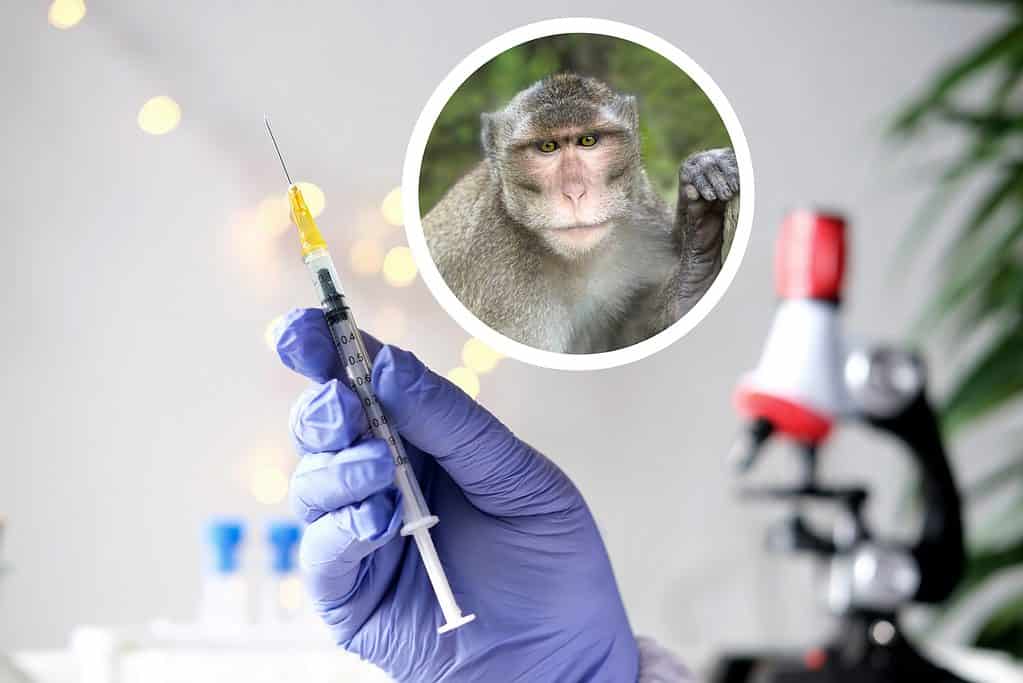
It is suggested that the procedure would become crucial in treating deadly human diseases such as cancer.
©Kittyfly/Shutterstock.com
Experts used a naturally occurring gene in natural jellyfish to produce a transgenic monkey. The gene is the green fluorescent protein (GFP), and they added it to the monkey’s chromosomes. The transgenic monkey, ANDi, was a rhesus macaque monkey. They chose this species specifically because it had a 95% DNA resemblance to humans.
The geneticists used a total of 224 eggs in the experiment to produce the genetic monkey. Out of the number, only three births were successful, and ANDi was the only one with the transgene. However, the “glowing” gene was recessive in ANDi.
Although it didn’t glow like jellyfish, the ANDi project was a huge success and a scientific breakthrough. Gerald Schatten, who led the research team, suggested that the procedure would become crucial in treating deadly human diseases such as cancer. The researchers have made even more alterations to the natural DNA structure of the species. Scientists are making efforts to study and possibly find the cure for other conditions as well.
9. Transgenic Mosquitoes

A British company named Oxitec created a transgenic male mosquito with a “self-limiting gene.”
©moxumbic/Shutterstock.com
Perhaps one of the most interesting cases of transgenic animals is the development of mosquitoes that give birth to weak offspring. Regular mosquitoes only live for a few days. But within this short period, they can transmit many deadly diseases, including malaria and Zika.
Genetic modification may hold the key to solving this problem in the future. A British company named Oxitec created a transgenic male mosquito with a “self-limiting gene.” The purpose of this gene is to make sure offspring produced by this mosquito would die within a shorter period than they normally would. However, there’s no telling how this would turn out as some scientists believe these genetically modified mosquitoes may lead to a more resilient hybrid species in the future.
Conclusion
Since the creation of the first transgenic animal in 1974, genetic modification has spread to many species. The production of transgenic animals is a huge leap forward in genetics, and there are many amazing potentials that it could unlock in a few years to come.
Summary of Transgenic Animals: 9 Animals That Have Been Genetically Modified
| Number | Animals |
|---|---|
| 1 | Transgenic Mice |
| 2 | Transgenic Rabbits |
| 3 | Transgenic Chicken |
| 4 | Transgenic Fish |
| 5 | Transgenic Sheep |
| 6 | Transgenic Cow |
| 7 | Transgenic Dog |
| 8 | Transgenic Monkey |
| 9 | Transgenic Mosquitoes |
The photo featured at the top of this post is © JPC-PROD/Shutterstock.com
Sources
- Interesting Engineering, Inc., Available here: https://interestingengineering.com/science/11-real-examples-of-genetically-modified-organisms-marvels-or-monsters
- WhatIsBiotechnology, Available here: https://whatisbiotechnology.org/index.php/science/summary/transgenic/transgenic-animals-have-genes-from-other-species-inserted
- Guardian News & Media Limited, Available here: https://www.theguardian.com/environment/2018/jun/24/genetically-engineered-animals-the-five-controversial-science
Thank you for reading! Have some feedback for us? Contact the AZ Animals editorial team.






